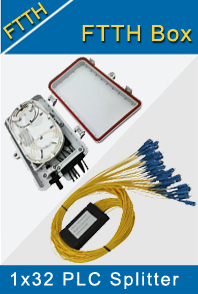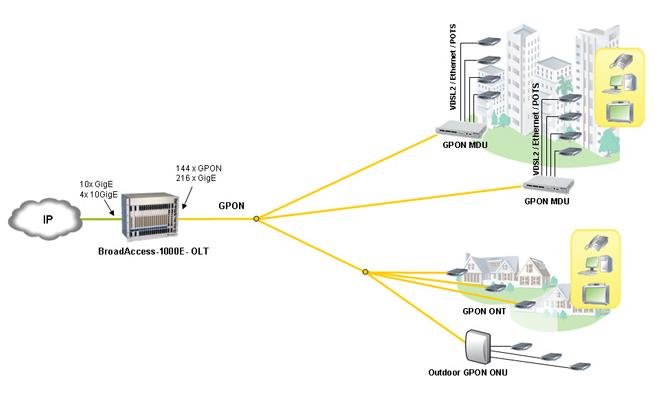-

- Sopto Home
-

- Special Topic
-

- FTTH Knowledge
-

- Why Choose GPON as your FTTH Solution?
FTTH Knowledge
- Solving the FTTH Rollout Problem in Multiple Dwelling Units
- WDM PON Introduction FAQ
- A Simple Overview of Optical Power Meter
- ODN is based on PON FTTH Optical Cable Network of the Device
- Using an OTDR to be an Expert in Fiber Link Testing
- How FTTH Broadband Works?
- Connections among Fiber Terminal Boxes & Patch Cables & Pigtails
- Easy to Install a Fiber Terminal Box
- What is Arrayed Waveguide Grating?
SOPTO Special Topic
Certificate



Guarantee
Except products belongs to Bargain Shop section, all products are warranted by SOPTO only to purchasers for resale or for use in business or original equipment manufacturer, against defects in workmanship or materials under normal use (consumables, normal tear and wear excluded) for one year after date of purchase from SOPTO, unless otherwise stated...
Return Policies
Defective products will be accepted for exchange, at our discretion, within 14 days from receipt. Buyer might be requested to return the defective products to SOPTO for verification or authorized service location, as SOPTO designated, shipping costs prepaid. .....
Applications

Sopto supply the best FTTH solutions for your network!
SOPTO Products
- Fiber Optic Transceiver Module
- High Speed Cable
- Fiber Optical Cable
- Fiber Optical Patch Cords
- Splitter CWDM DWDM
- PON Solution
- FTTH Box ODF Closure
- PCI-E Network Card
- Network Cables
- Fiber Optical Adapter
- Fiber Optical Attenuator
- Fiber Media Converter
- PDH Multiplexers
- Protocol Converter
- Digital Video Multiplexer
- Fiber Optical Tools
- Compatible
Related Products
Performance Feature
FTTH Knowledge
Recommended

Why Choose GPON as your FTTH Solution?
Over recent years, Internet access speeds have increased greatly to keep pace with the demand of new services and bandwidth-hungry applications, such as streaming video. New technologies have been adopted that can support the current need for bandwidth, but they have not always taken into account the longer-term growth expected for access networks.
Market projections of Internet speed demands indicate strongly that they will rapidly approach 100 Mbps, and then eventually reach 1 Gbps for individual users. Only fiber cables have the capacity to support these higher speeds over the long distances that exist in access networks. For service providers to deliver the bandwidth that users demand, Fiber to the Home (FTTH) networks will have to be deployed more extensively until they are mainstream. The new FTTH architecture will then form the basis of future-proof access networks that will serve consumer needs for many years to come.

GPON FTTH Solution
The clear advantage of PON networks generally is that a single shared optical fiber can support multiple users through the use of inexpensive passive optical splitters. In GPON networks, up to 64 ONTs can share one fiber connection to the OLT. This makes GPON an attractive option for service providers wanting to replace copper networks with fiber, particularly in high-density urban areas.
Other advantages and features of GPON networks include:
Standardized by ITU-T G.984 (Class B+).
Operates at 2.488 Gbps downstream and 1.244 Gbps upstream.
Practical fiber split ratios up to 1:64 (standard supports up to 1:128)
The downstream channel is broadcast to all ONTs. The upstream channel uses time division multiplexing with a dynamic bandwidth allocation mechanism.
Distance between OLT and ONT/ONU can be up to 20 km.
GPON specifies QoS and management protocols required for triple-play services over the network.
Downstream security guaranteed with 128-bit AES encryption.
No active equipment in the access network, preventing problems from electromagnetic interference or lightning.
Reduced equipment and fiber at the central office.
Not only does GPON offer twice the bandwidth of EPON/GEPON at its downstream speed of 2.5Gbps, but it also supports twice the split ratio. This means that with a 64-way split, each GPON subscriber still receives an impressive connection bandwidth of about 35 Mbps. If a service provider chooses to implement lower split ratios, such as 16 or 32, then even more bandwidth can be delivered to subscribers. This greater bandwidth delivered by GPON is fully available to subscribers due to the improved bandwidth efficiency of the GPON standard. What’s more, GPON is designed to provide triple-play services (data, video, and voice), not just high-speed Internet access.

GPON’s higher line speed, greater split ratios, and support for triple-play services combine to offer maximum flexibility and cost advantages for service provider deployments.
GPON was developed by the ITU-T to be an industry-wide interoperable standard. Full interoperability means that devices such as ONTs can operate reliably with OLT equipment from different vendors. This factor is important for driving down equipment costs and enables service providers to deliver GPON services profitably to their subscribers. Also, new GPON-based standards, such as XGPON, boosts the performance of PON networks up to 10 Gbps while maintaining backward compatibility with already deployed GPON networks.
So, why choose GPON as your FTTH Solution? You must get the answer. For more information, please browse our website or contact a Sopto representative by calling 86-755-36946668, or by sending an email to info@sopto.com.



